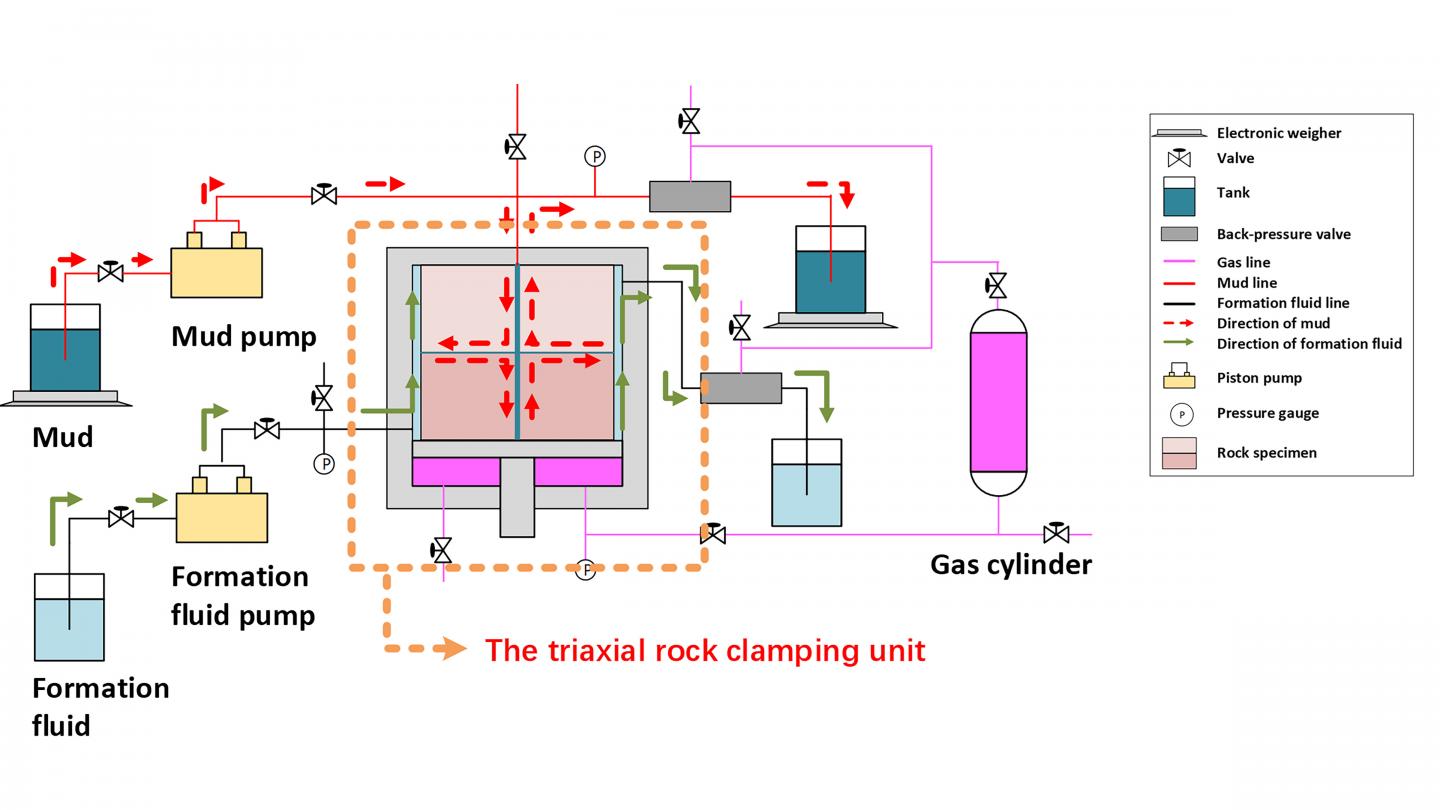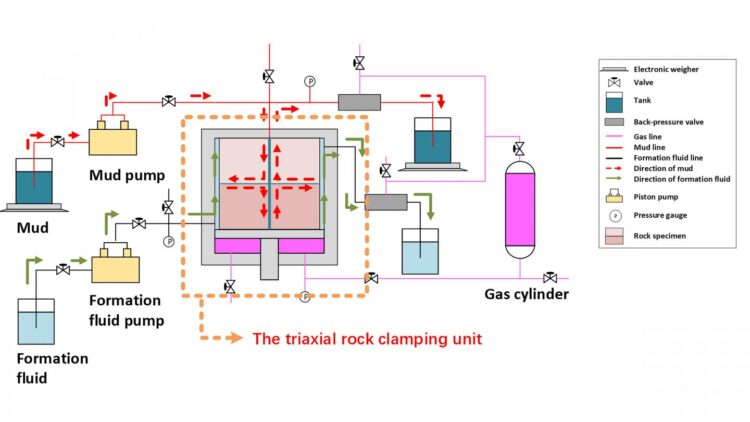Experimental study on borehole ballooning leads to a device which may help prevent serious drilling accidents

Credit: Reyu Gao
WASHINGTON, April 28, 2020 — A device which simulates borehole ballooning, a detrimental side effect of deep-water drilling operations, is expected to ensure safe and efficient operations. If not prevented, borehole ballooning can lead to irreversible damage and serious drilling accidents, which can result in reservoir pollution and huge economic loss.
In a recent issue of the Review of Scientific Instruments, from AIP Publishing, researchers from the China University of Petroleum-Beijing present a device that can simulate this dangerous phenomenon in the hopes of preventing it.
“In order to promote the development of deep-water drilling technology and ensure the safe and efficient exploitation of deep-water oil and gas, we have conducted research on the problems encountered in deep-water drilling processes, and the borehole ballooning is one of them,” said author Reyu Gao.
Borehole ballooning is reversible mud gains and losses to the wellbore that occur during drilling. Increased understanding and data on the phenomenon can help scientists develop preventative response measures to counteract it.
Unlike previous research, which largely focused on numerical modeling, the authors’ research included experimental results.
“Most research into borehole ballooning has been theoretical, with few experiments,” said Gao. “Our device is the first professional device capable of simulating and studying the borehole ballooning under different conditions.”
The device, which is made up of four individual units, can simulate conditions like different fracture opening pressures, rock types, and mud circulation pressures. Its sections include the displacement unit, the triaxial clamping unit, the back-pressure unit, and the control and data acquisition system.
“According to the current research, the main mechanism causing borehole ballooning is the opening and closing of the fracture network around the wellbore caused by wellbore pressure fluctuations. Therefore, based on this mechanism, we first designed the core unit of the device, the triaxial clamping unit, which can simulate the opening and closing of fractures,” said Gao.
The researchers proved their device was able to accurately simulate the effects of borehole ballooning through experiments, and they expect these experiments to be able to validate theoretical research on the topic.
###
The article, “An innovative experimental device for borehole ballooning,” is authored by Reyu Gao, Jun Li, Hongwei Yang, Kuidong Luo, Chengwei Tan and Penglin Liu. The article will appear in Review of Scientific Instruments on April 28, 2020 (DOI: 10.1063/1.5139950). After that date, it can be accessed at https:/
ABOUT THE JOURNAL
Review of Scientific Instruments publishes novel advancements in scientific instrumentation, apparatuses, techniques of experimental measurement, and related mathematical analysis. Its content includes publication on instruments covering all areas of science including physics, chemistry, materials science, and biology. See https:/
Media Contact
Larry Frum
[email protected]
Related Journal Article
http://dx.





